موريس دي فيلمينك(1876-1958)
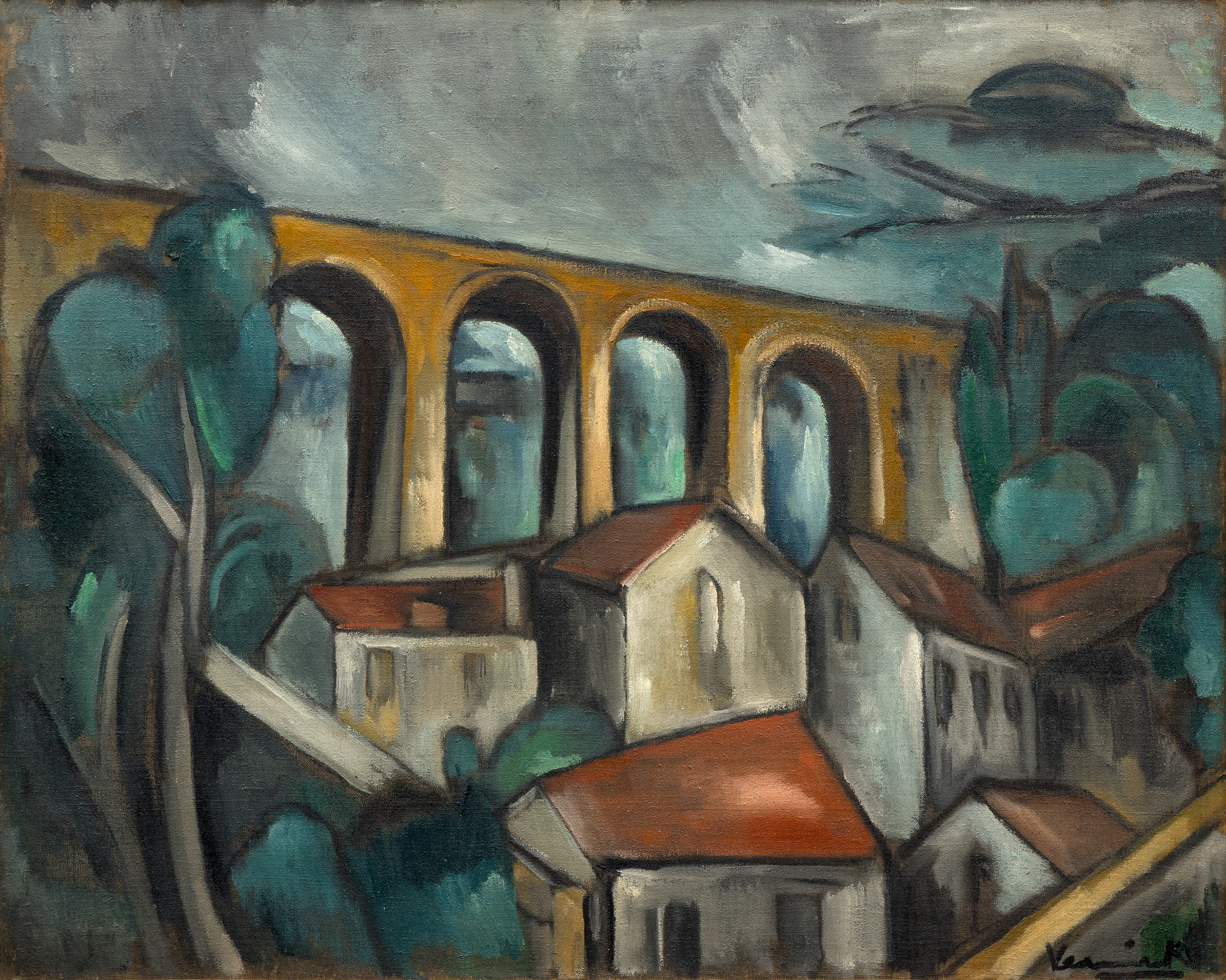
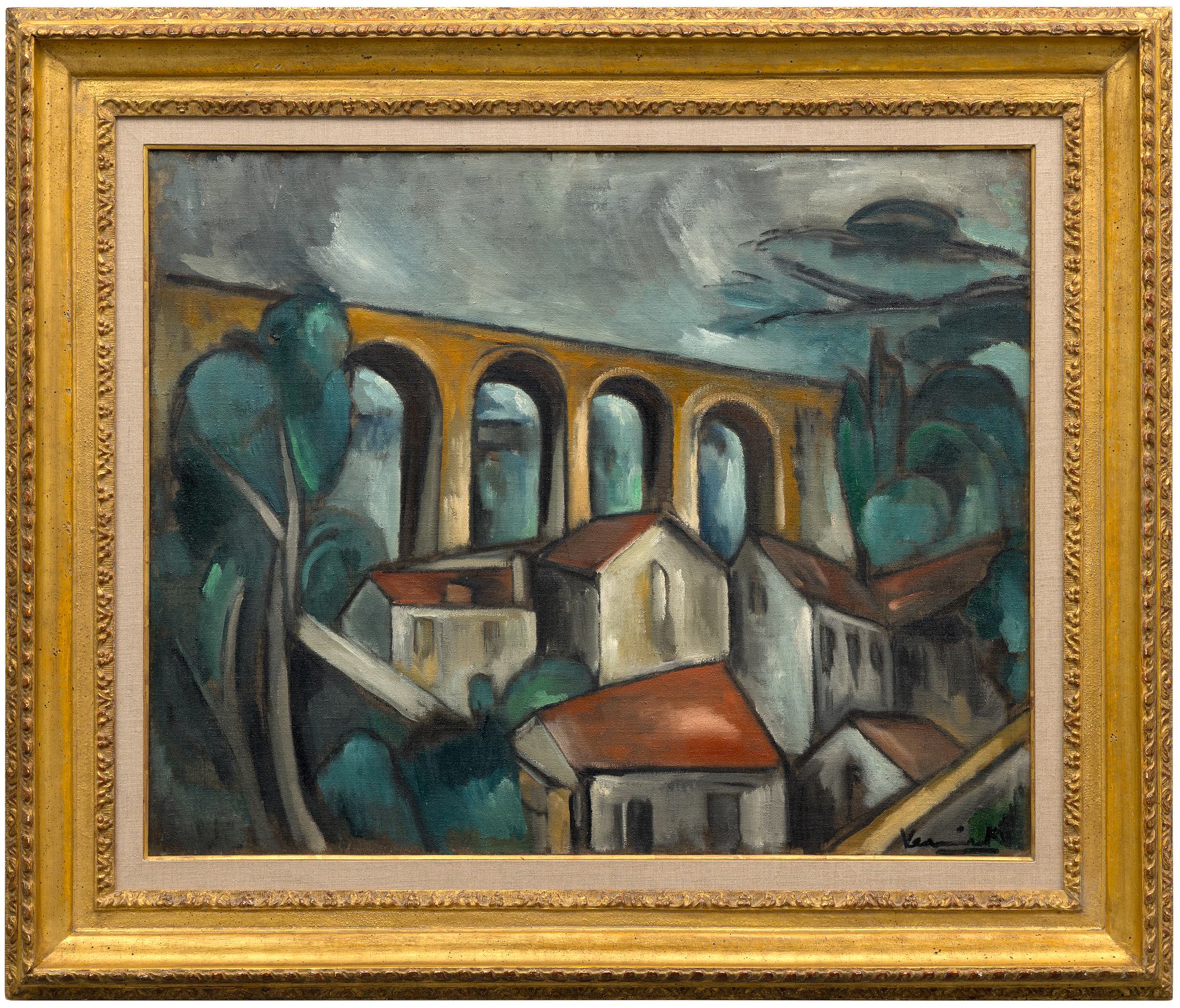
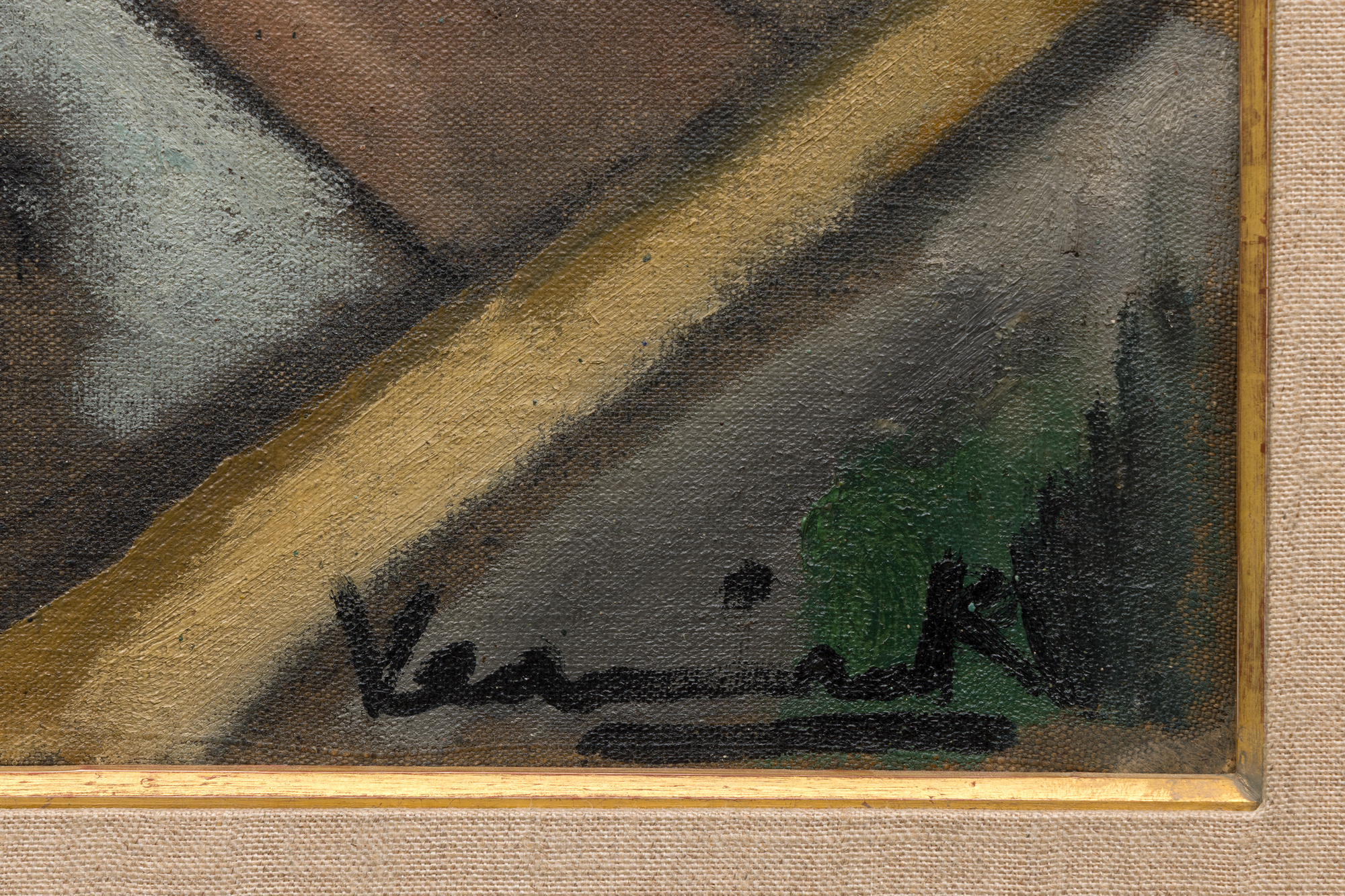
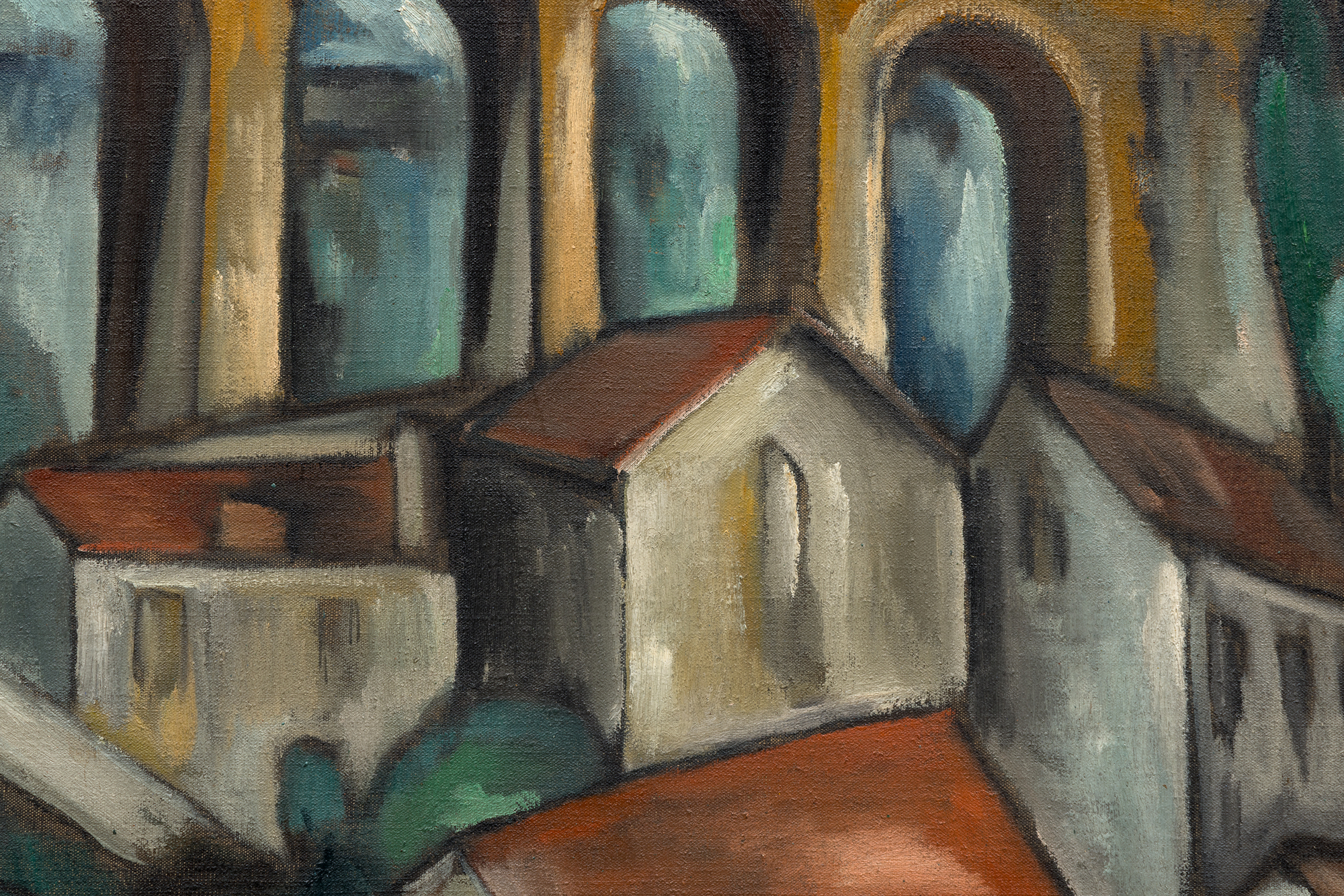
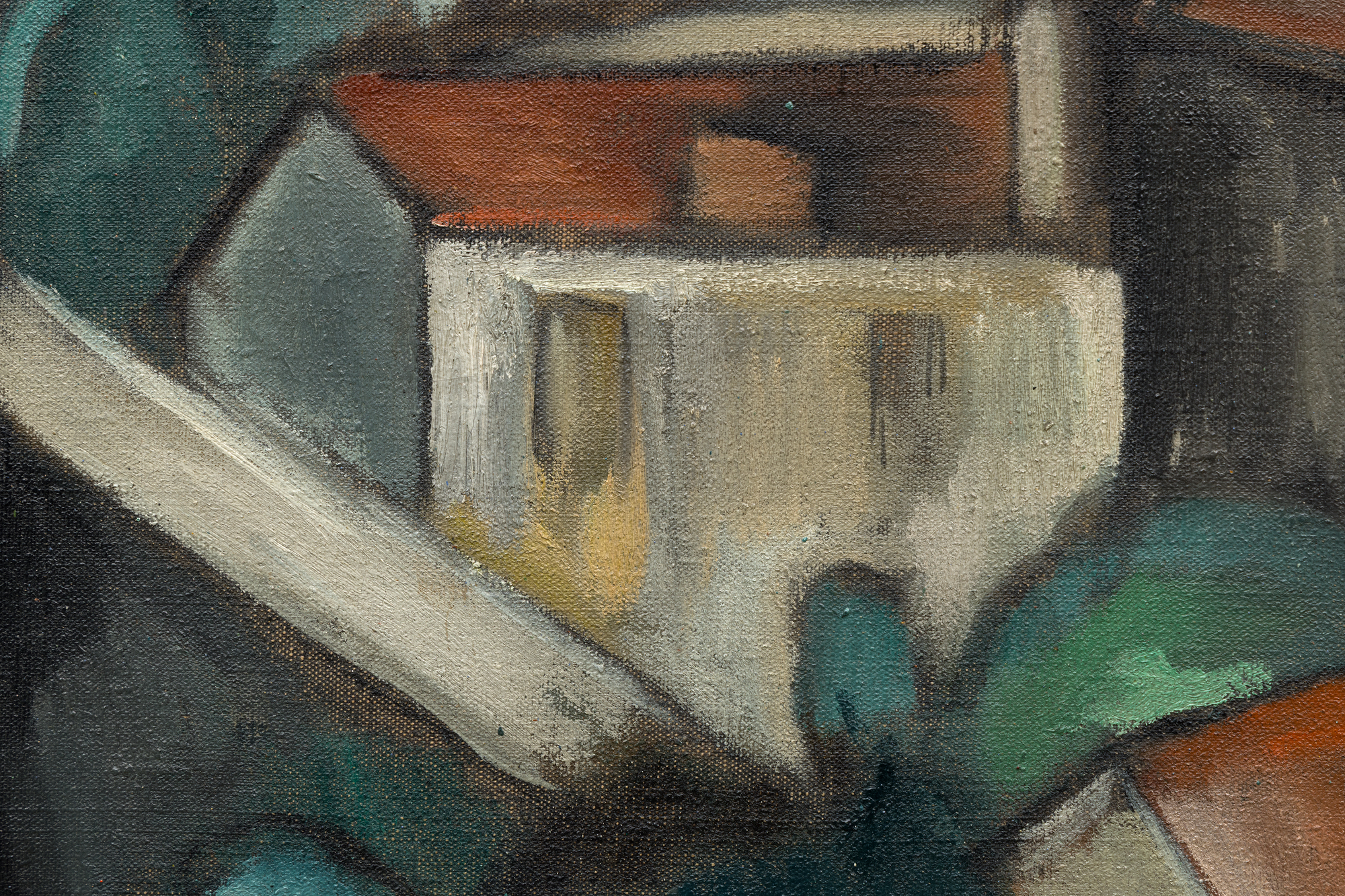
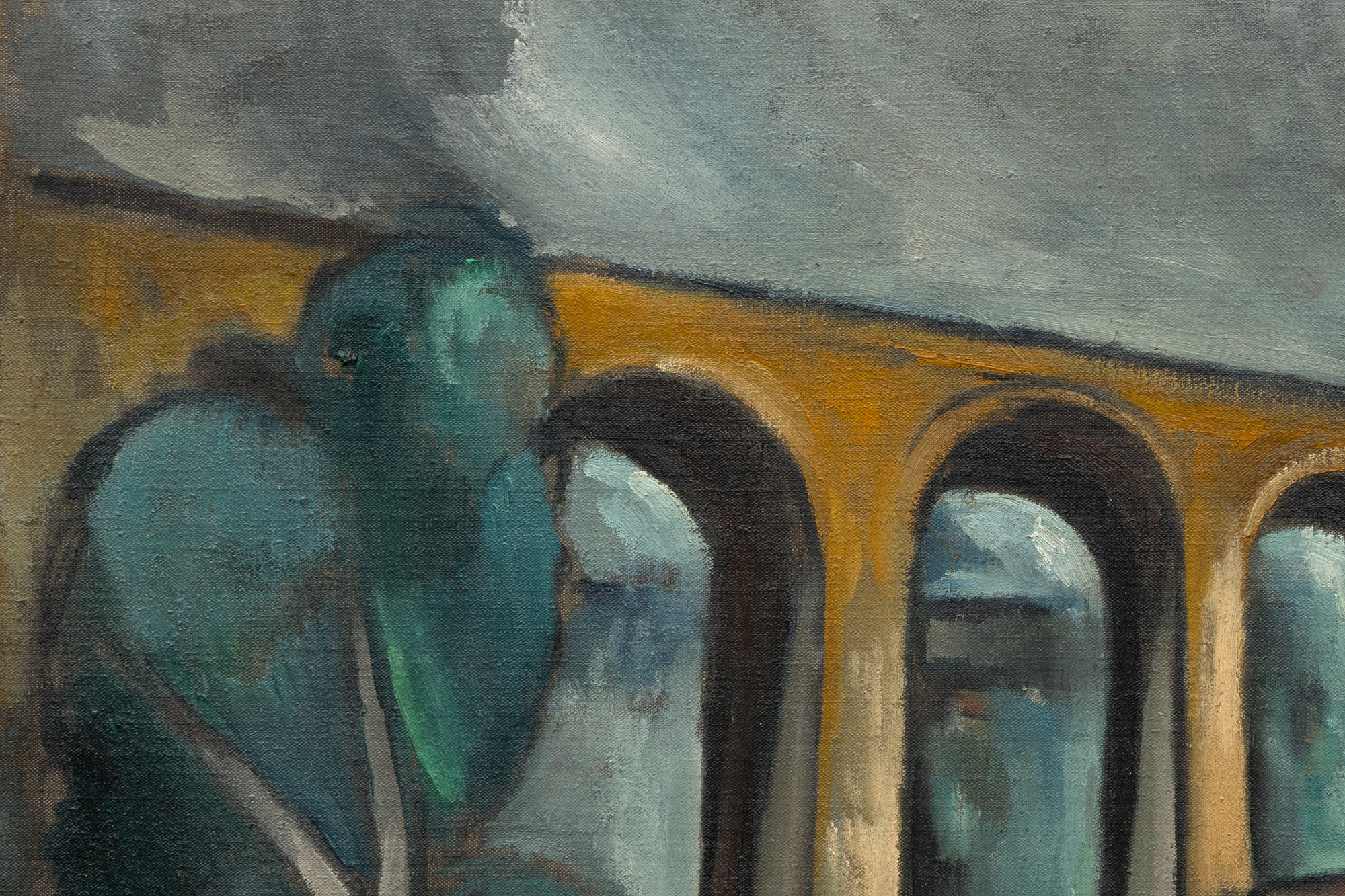
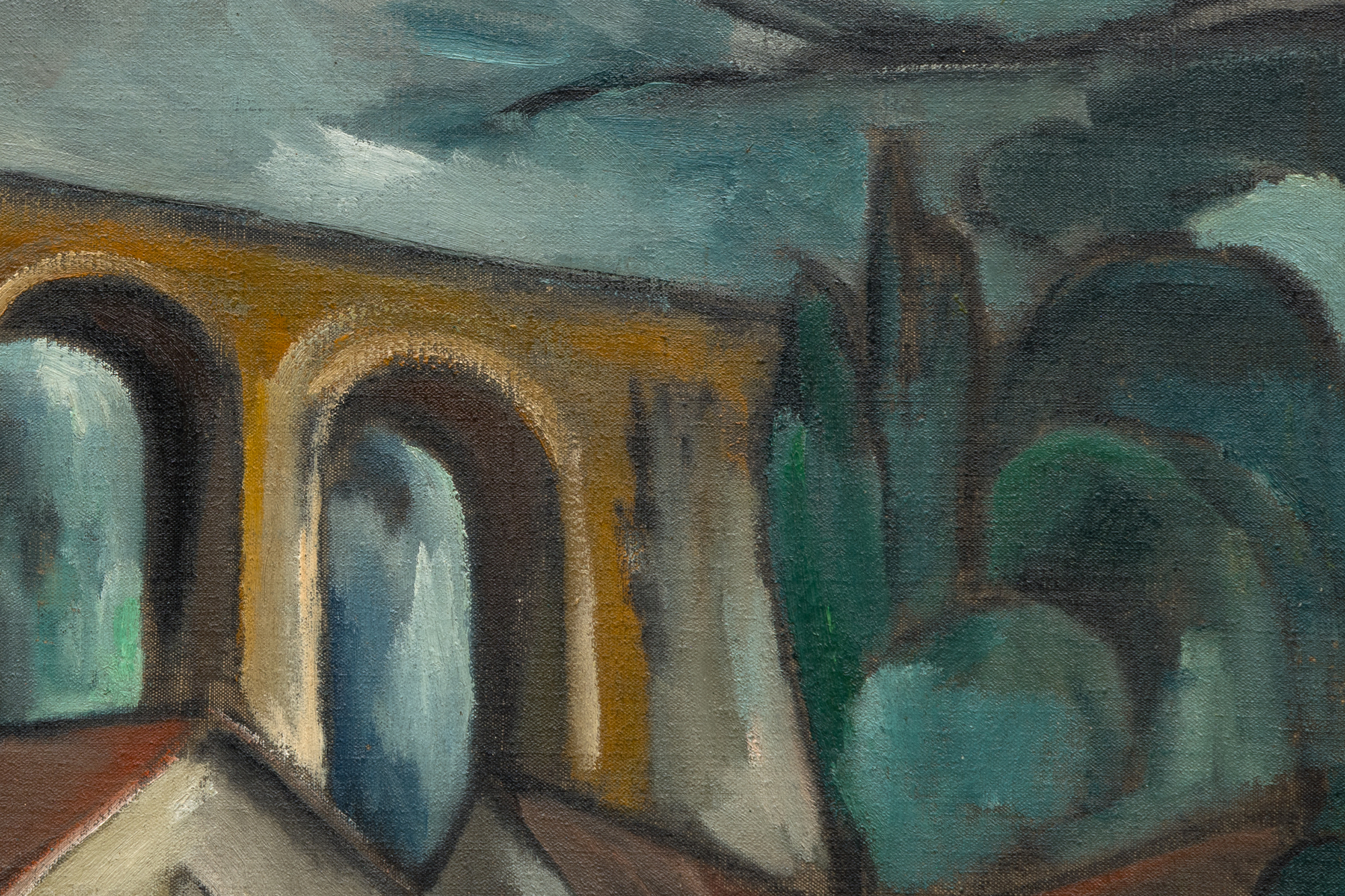
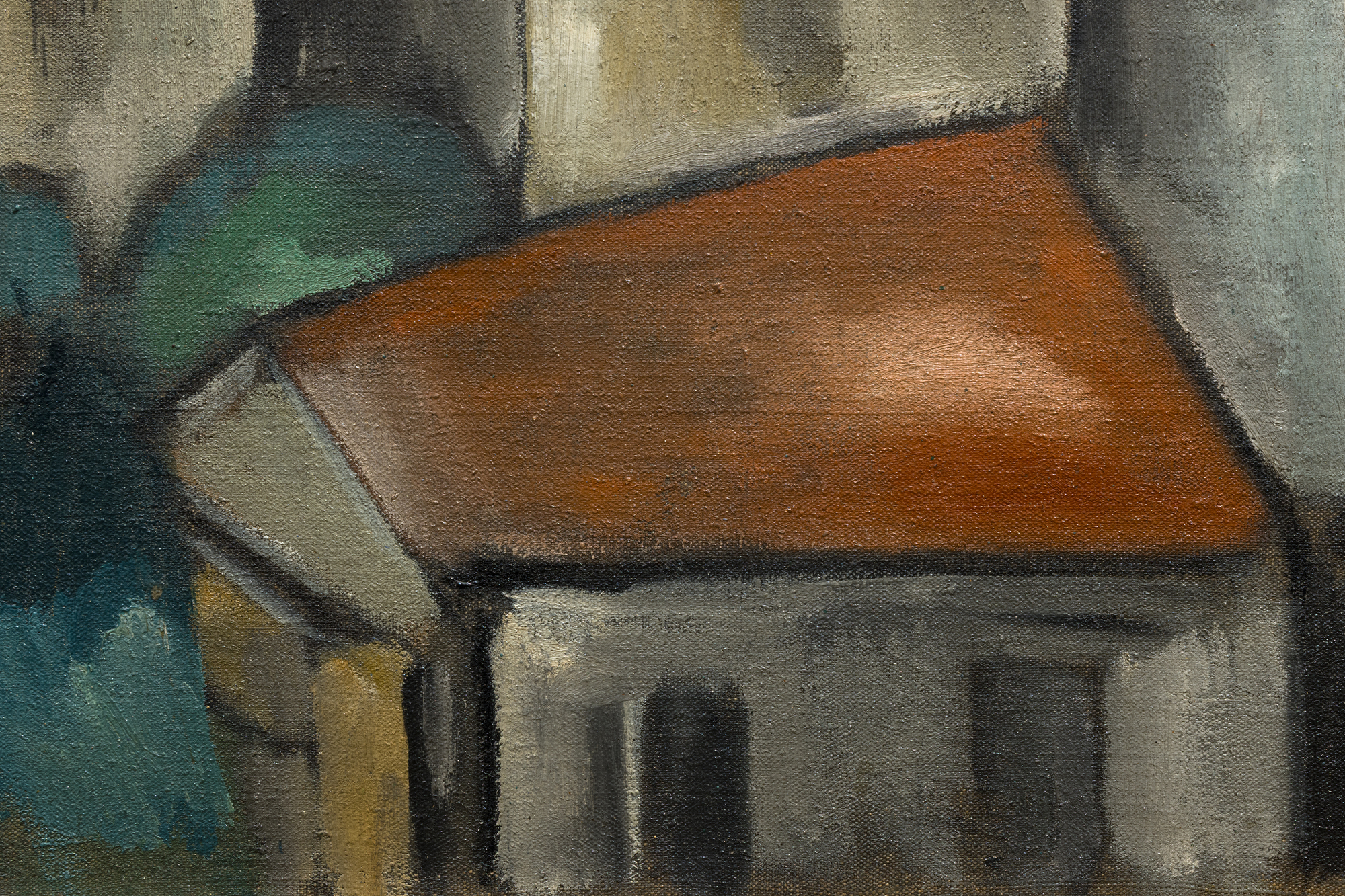
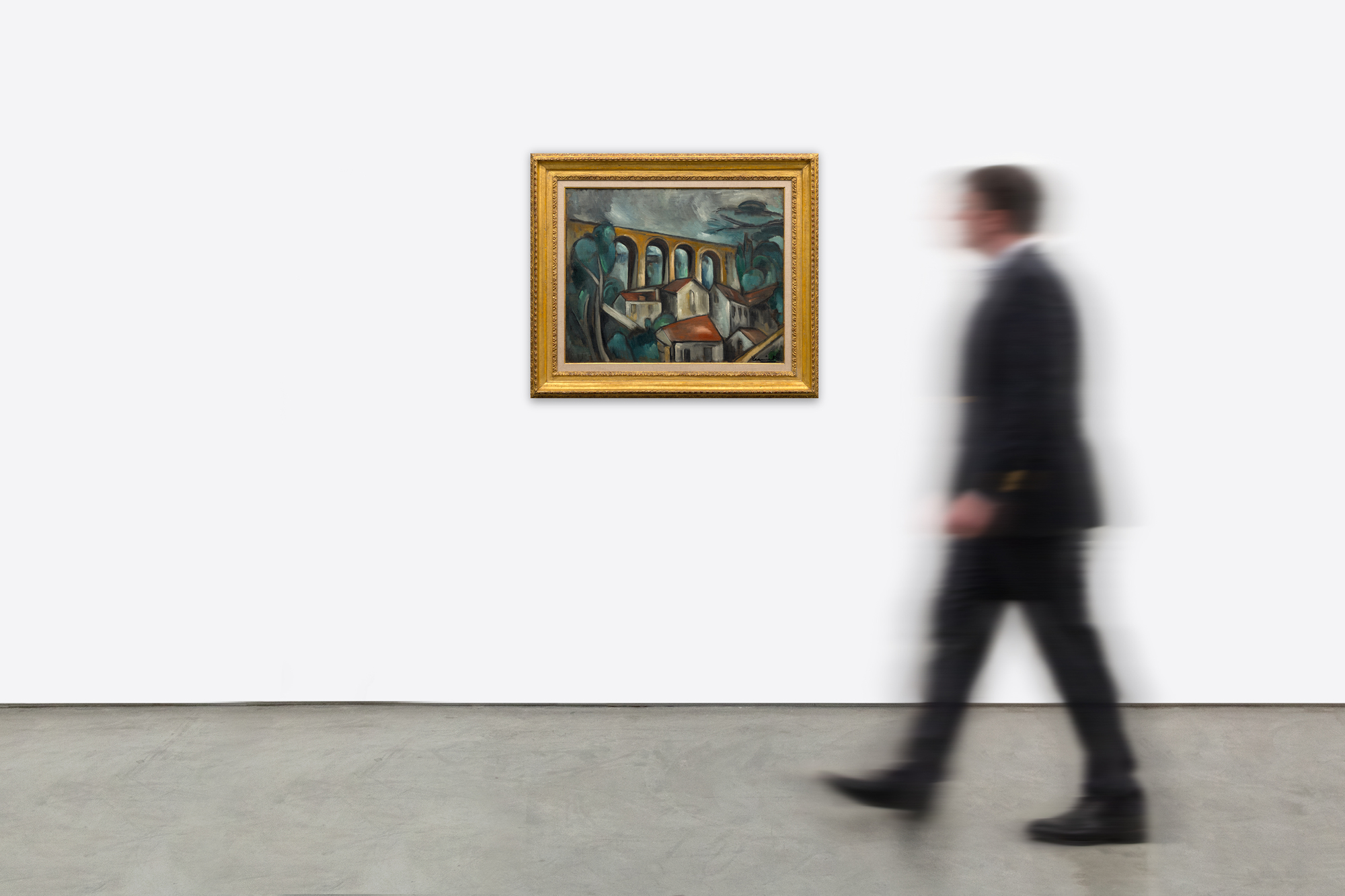
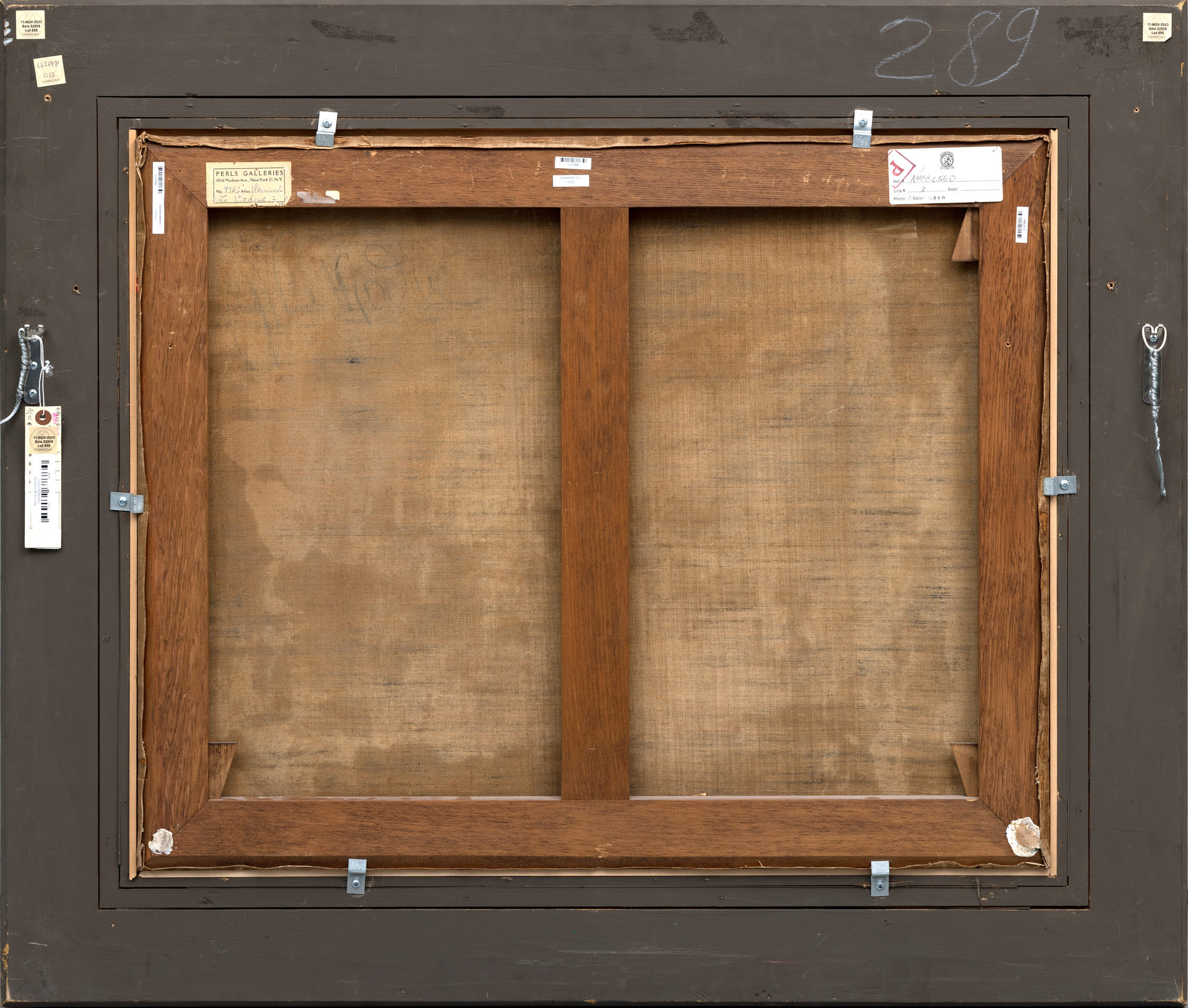
الاصل
فيرنر روشر، كولونيامعارض بارك بيرنت، نيويورك، نيويورك، 17 أبريل 1969، القطعة 143
غاليري مارسيل بيرنهايم، باريس
بيرلس غاليريز، نيويورك
مجموعة خاصة، تم اقتناؤها من المجموعة المذكورة أعلاه، ج. 1993
معرض
طوكيو، غاليري نيتشيدو وأوساكا، شين دايبيرو، فلامينك، أكتوبر-نوفمبر 1966، رقم 10الادب
غاليري نيشيدو، فلامينك، طوكيو، طوكيو، 1966، رقم 10، مصور (مؤرخ عام 1918 وعنوانه فيادوك)175,000
تُضفي ضربات فرشاة فلامينك الجريئة ولوحة الألوان الصامتة تأثيراً منحوتاً تقريباً، حيث تظهر الأشجار وأسطح المنازل بأشكال ديناميكية ذات أوجه. وتعزز السماء الملبدة بالغيوم من كثافة المشهد، بينما تهيمن أقواس الجسر، مما يرمز إلى الحداثة وسط سحر الريف. يجسّد هذا العمل جذوره الفوفية المبكرة التي تطورت إلى تأثيرات تكعيبية، ويعرض أسلوباً رائداً.
كان فلامينك مقيماً في المنطقة، وكثيراً ما صوّر فلامينك منظرها الطبيعي المتطور مازجاً بين التقاليد والابتكار. تقدم لوحة "لو فيادوك دو سان جيرمان أون لاي" لهواة جمع الأعمال الفنية لمحة نادرة عن فترة تحوله. كما أن تكوينها المذهل وسياقها التاريخي يجعلها إضافة مقنعة لأي مجموعة فنية تحتفي بمساهمة فلامينك في تطور الفن الحديث.


